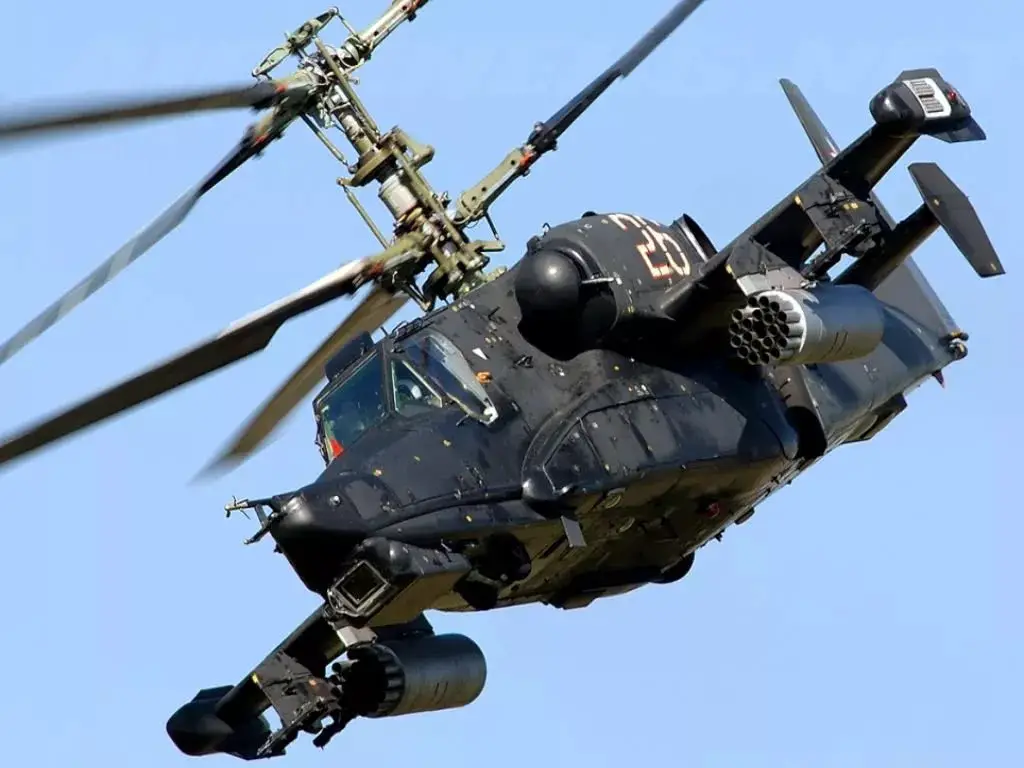Mil and Kamov’s design bureaus produced many outstanding machines during the Soviet Union era, including combat attack helicopters. The Mi-24 was the most successful and famous of these. Nevertheless, the widely recognized “Crocodile” was far from optimal, despite its numerous advantages. The Soviet Union started the development of a new attack helicopter in the mid-1970s. The project resulted in the development of the Ka-50 “Black Shark,” which is widely considered to be the most sophisticated helicopter in the country.
The first Soviet autogyro factory was inaugurated in 1939 under the leadership of Nikolai Ilyich Kamov and Mikhail Leontievich Mil. Subsequently, the two engineers launched their own design bureaus, ultimately parting ways. Kamov initiated the development of helicopters in 1940, and Mil followed suit in 1947. The two families of Soviet helicopters developed in distinct directions. The helicopters produced by Kamov’s bureau were particularly popular in naval applications due to their emphasis on compact designs and coaxial rotor configurations. In the interim, Mil’s directorate selected a classical longitudinal rotor configuration, which provided the most effective performance for transport and combat helicopters.
The USSR required a new assault helicopter by the mid-1970s for two primary reasons. Initially, it was evident in 1976 that the Mi-24 in service no longer fully met the military’s needs. Secondly, the United States had initiated the development of a next-generation attack helicopter, the AH-64, which is still in use and undergoing upgrades to this day. Mil and Kamov design bureaus were both chosen to undertake the difficult task of developing a new attack helicopter. The Mi-28 helicopter was the outcome of Mil’s team’s decision to adopt a well-established design. Nevertheless, Kamov’s team sought to demonstrate that a coaxial rotor design could be effective for attack helicopters. The Ka-50, also referred to as the “Black Shark,” was the result of their initiatives. The Ka-50 was selected as the main assault helicopter after outperforming the Mi-28 in 1985 trials.
The military was captivated by the new helicopter’s exceptional maneuverability, robust armament, exceptional flight performance, and high level of armor. One of the most automated attack helicopters of its era, the “Black Shark” introduced a wide range of innovations in both domestic and global helicopter engineering. Furthermore, the Ka-50 was the first aircraft in the Soviet Union that had a sophisticated pilot ejection system. Nevertheless, the military was not wholly satisfied with the Ka-50’s reliance on automation in lieu of a second pilot. The Ka-50 underwent numerous improvements throughout the 1990s, despite financial difficulties. It was even involved in combat during operations in Chechnya. However, the Ka-50 was never put into full-scale production, despite its early success.
This was the result of a combination of factors. Initially, Russia was unable to mass-produce the “Black Shark” due to a lack of financial resources in the early 2000s. Secondly, the Ka-50’s design defects were exposed by operational experience. Third, the military kept on having concerns regarding the single-pilot configuration. Finally, the army lacked a helicopter that could effectively coordinate an attack party consisting of many “Black Sharks.” The circumstances evolved over time. The two-seat Mi-28, which was subsequently upgraded to the Mi-28N “Night Hunter,” was inducted by the Russian army. It was responsible for the management of assault groups. In the interim, the Ka-50, which was a single-seat aircraft, underwent a transformation into the Ka-52 “Alligator” and Ka-52K “Katran,” which were two-seat aircraft. As a result, the Soviet engineers’ aspirations from the 1970s to the 1990s were not fruitless. The Russian army currently uses both helicopter families and they are being effectively used.
Official Website of Youtube Channel – Altitude Addicts
